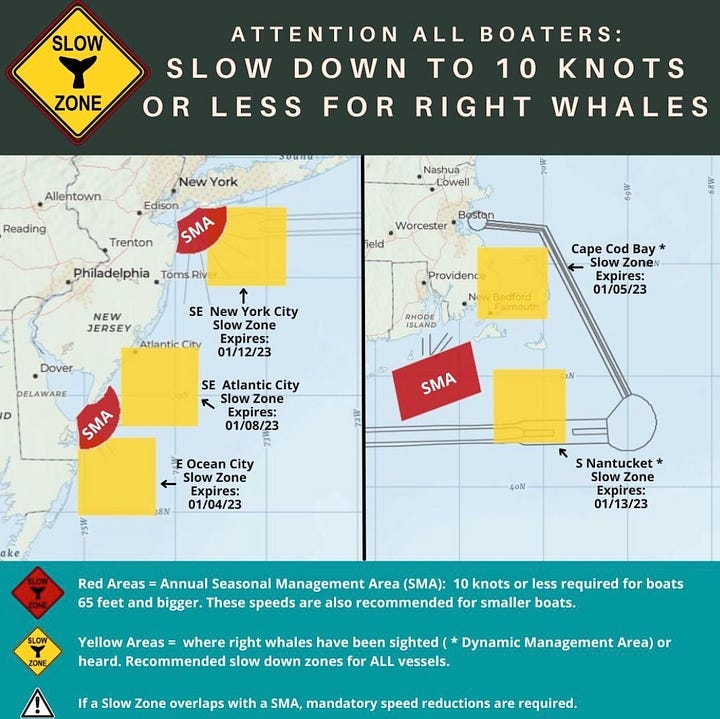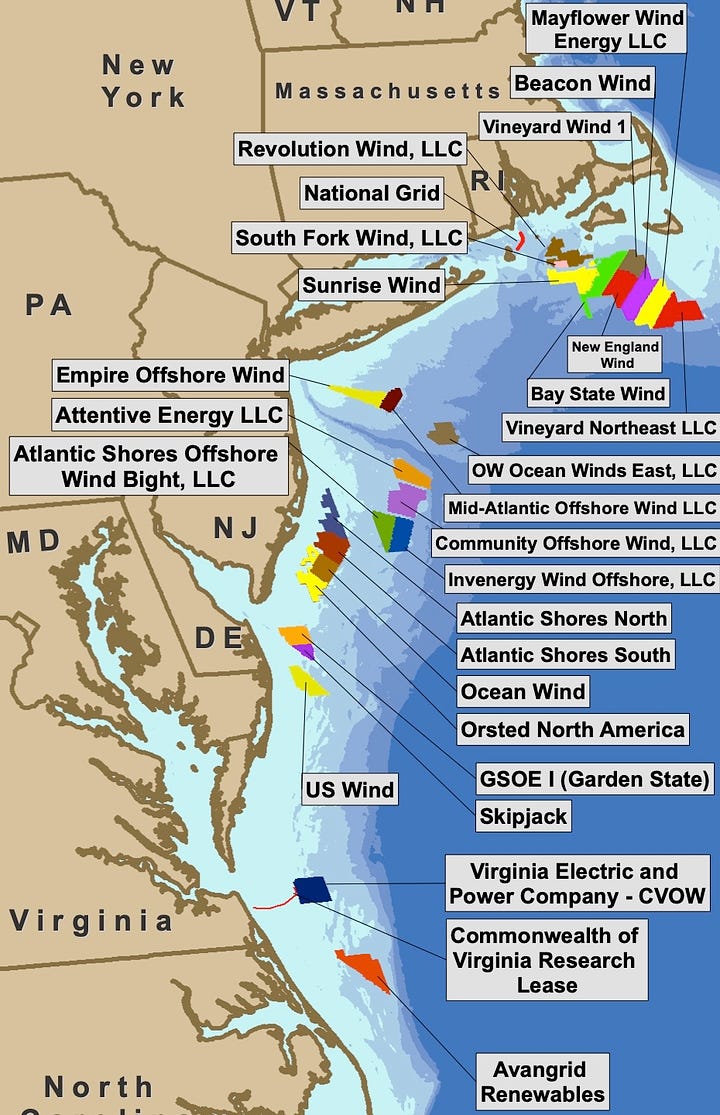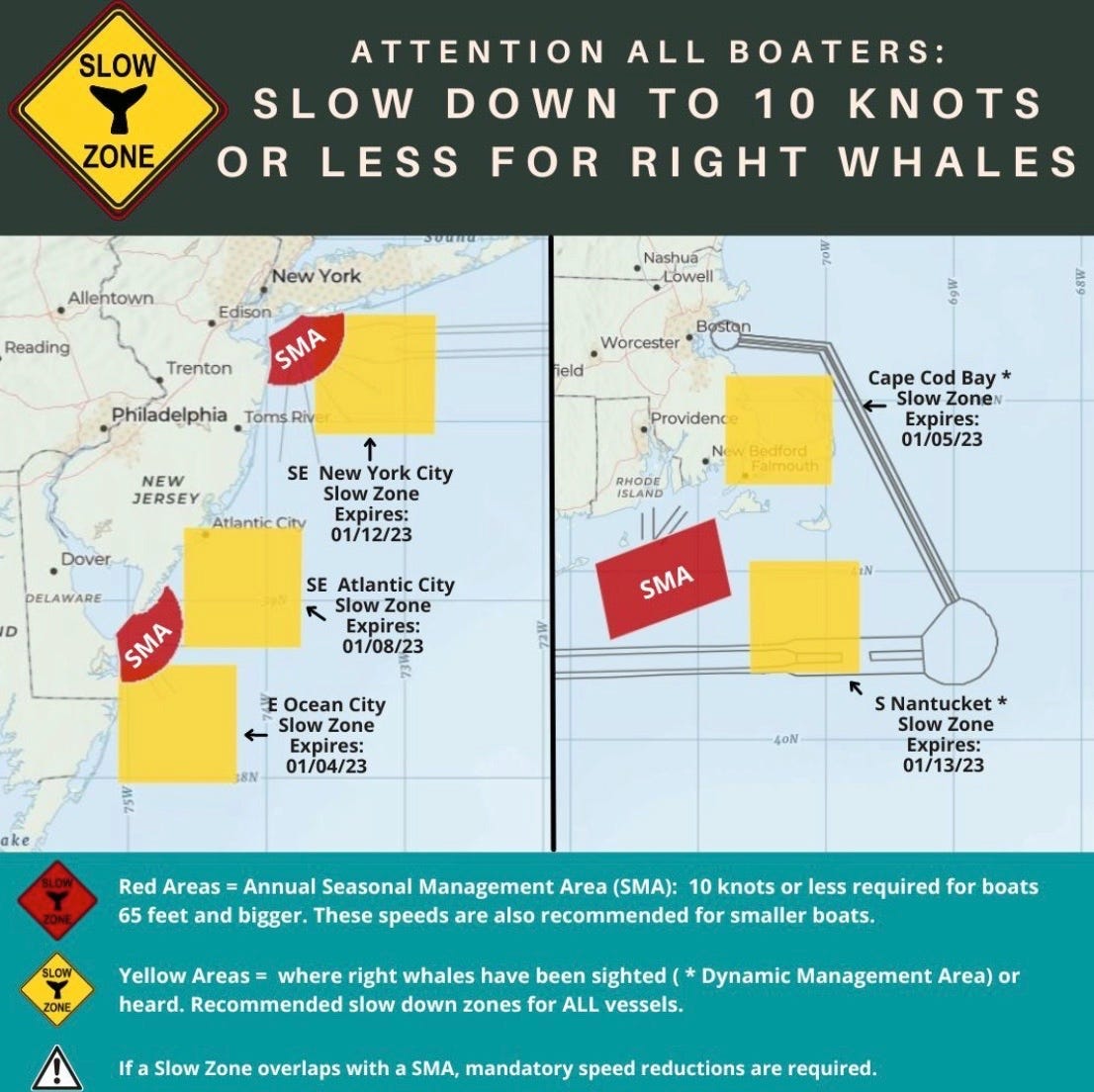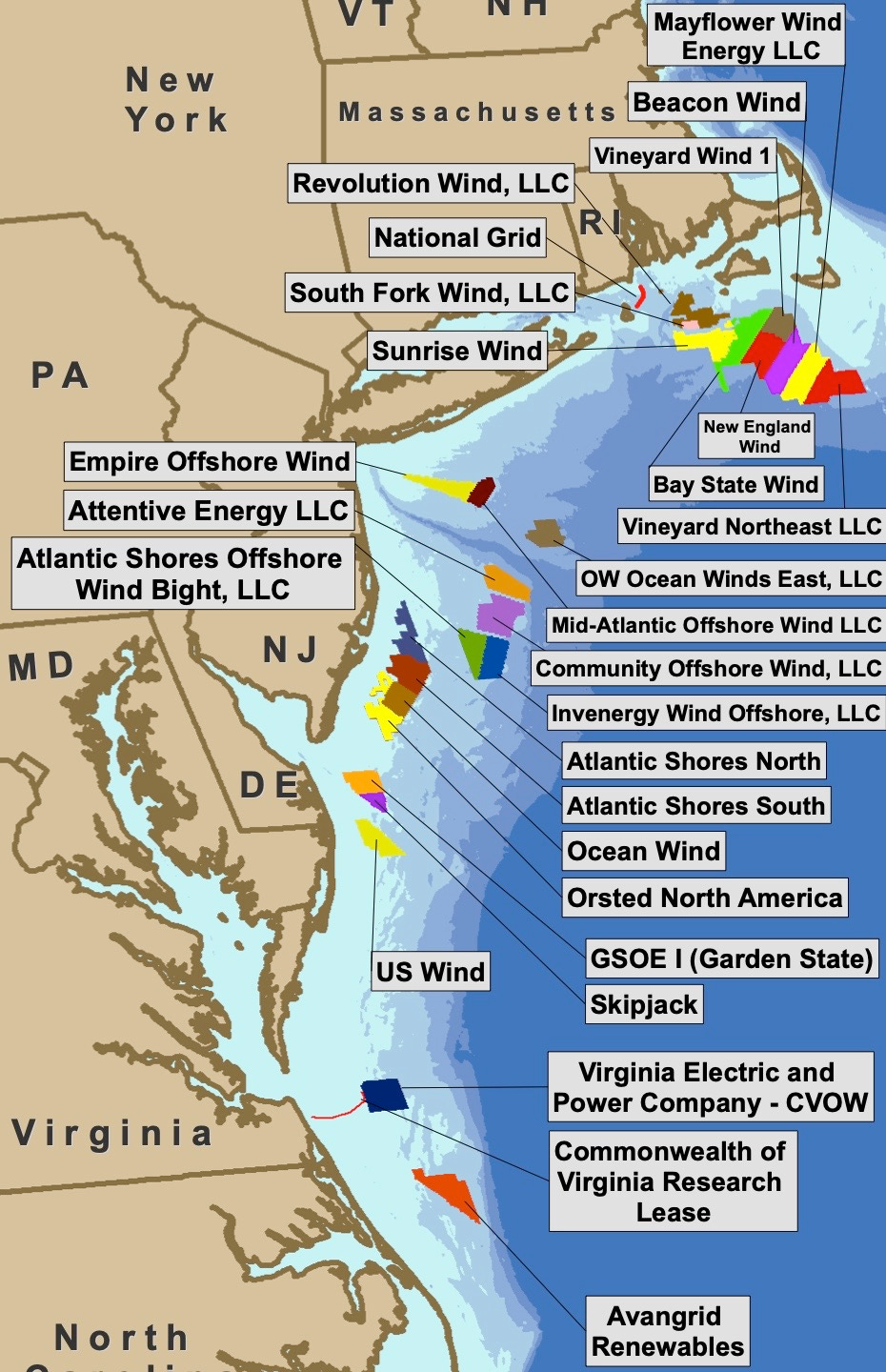

I love maps. The walls of my old office were covered with them – pipeline maps, railroad maps, state maps, and one of my favorites: Buckminster Fuller’s Dymaxion map. Electronic maps are handy, but I don’t trust them. Whenever I go on a road trip, I always take a paper map. The info they provide is often richer and more detailed than what you can get on a smartphone app. I mention that personal history because of two maps I found yesterday. They provide proof that the Biden administration’s ambitious offshore wind plans (30,000 megawatts is the target) are in direct conflict with the need to preserve the critically endangered North Atlantic Right Whale.
I’ve posted the maps twice. I posted them above in a side-by-side view and again below in a larger format, so you can see them in better detail. The map on the left was published on December 30 by the fisheries division of the National Oceanic and Atmospheric Administration. It was included in a notice titled “New Right Whale Slow Zone South of Nantucket, MA – Effective Through Jan 13.” The notice warns boaters to reduce their speed in the marked areas to 10 knots or less. The yellow areas are where North Atlantic Right Whales have been sighted. The red areas are the Seasonal Management Areas (SMA).
The map on the right is readily available on the website of the Bureau of Ocean Energy Management (BOEM). It’s dated June 30, 2022, and shows the proposed offshore wind projects.
Together, the maps clearly show that the offshore wind projects being approved by the Biden Administration could be built right on top of the habitat of the North Atlantic Right Whale, a species that is seeing huge population losses. Over the past decade or so, the whale’s population has plunged by about 26% and there are only about 70 breeding females left.


This morning, I talked to Meghan Lapp, the fisheries liaison for Seafreeze Ltd, a commercial fishing and processing company based in North Kingstown, Rhode Island. Lapp told me that if BOEM was a “responsible government agency, it would have said ‘let’s avoid areas that have critically endangered species.’ But they didn’t. So now it’s going to come down to this: do people care about critically endangered species or not? If they don’t care about critically endangered species, they will move ahead.”
Seafreeze is one of the plaintiffs in litigation against the federal government which claims that the Bureau of Ocean Energy Management’s approval of an offshore wind project known as Vineyard Wind was illegal. Seafreeze is also a member of the Responsible Offshore Development Alliance, which claims in its lawsuit that the approval was “arbitrary, capricious, and contrary to law,” and that it violated several federal statutes “including the Outer Continental Shelf Lands Act, National Environmental Policy Act, Clean Water Act, Endangered Species Act, Marine Mammal Protection Act, Merchant Marine Act, and Administrative Procedure Act.”
Earlier this year, a top NOAA official warned his counterpart at BOEM about the impact that offshore wind development could have on the whales, saying “Additional noise, vessel traffic and habitat modifications due to offshore wind development will likely cause added stress that could result in additional population consequences to a species that is already experiencing rapid decline.” The author of the letter was Sean Hayes, the chief of the protected species branch at the NOAA’s National Northeast Fisheries Science Center. Hayes said that disturbance to the whales’ foraging areas “could have population-level effects on an already endangered and stressed species.” Hayes’ conclusion was unequivocal: the “oceanographic impacts from installed and operating turbines cannot be mitigated for the 30-year lifespan of the project, unless they are decommissioned.”
Note that line: the impact of the turbines “cannot be mitigated.”
It’s important to note that the new NOAA map was published at about the same time that Bloomberg reported that BOEM also ignored an October 2021 letter from NOAA officials warning them that the proposed South Fork offshore wind project would threaten the Southern New England Cod, which as Bloomberg reports, is “a species so venerated in the region a wooden carving of it hangs in the Massachusetts state house.” Bloomberg also reported that despite the NOAA warning, “The Interior Department approved the project anyway.”
It’s difficult to predict what happens next. But it’s abundantly obvious that top Biden Administration officials are ignoring the warnings of our government’s top endangered species experts — and the need to preserve some of our most iconic and endangered species — in the headlong rush to build massive amounts of offshore wind energy.
It’s also clear, and lamentable, that America’s richest enviro-NGOs and loudest climate activists are doing the same.



